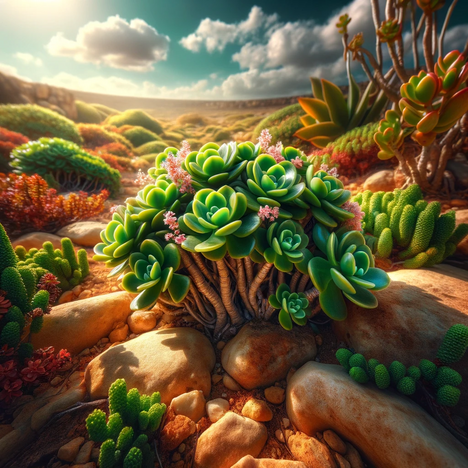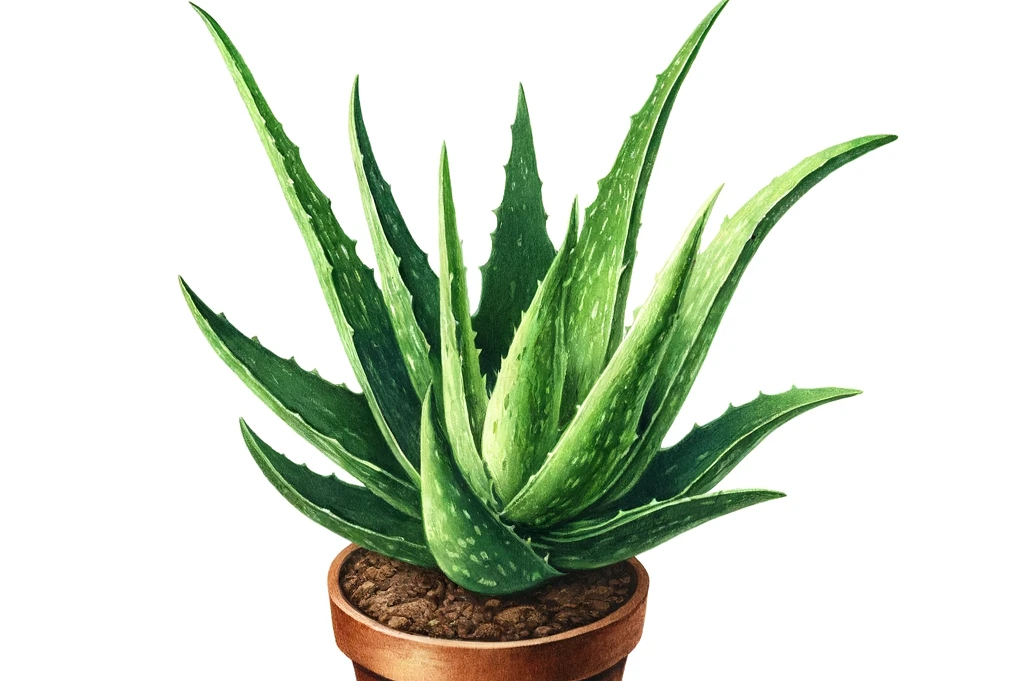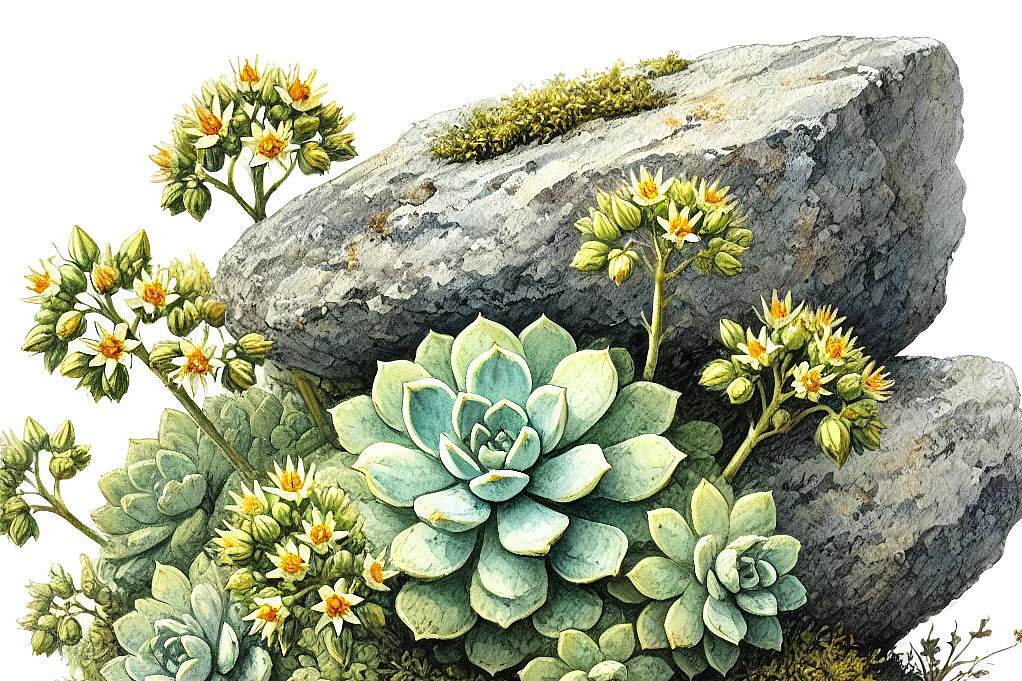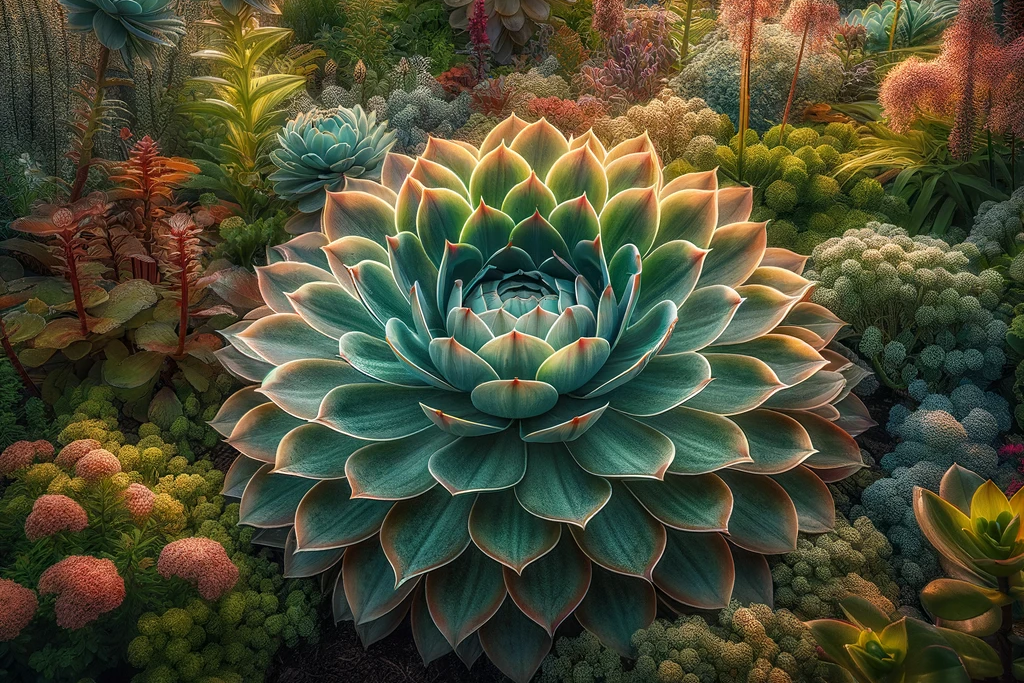Crassula

In the diverse world of houseplants, the money tree (Crassula ovata), also known as the money tree, stands out with its lush green leaves and robust characteristics. It is a popular green roommate in many households, not only aesthetically pleasing but also appreciated for its low-maintenance nature. However, when it comes to our dogs, it's important to consider the safety of plants in our homes. In this article, we'll explore what, exactly, the briar leaf is and assess the potential pros and cons of its presence in a household with dogs.
What is money tree?
The thickleaf (Crassula ovata), often called the money tree, is a popular houseplant that originally comes from South Africa. It belongs to the succulent family and is characterized by its fleshy, shiny leaves, which can store water, making the plant particularly easy to care for. Crassula species can produce star-shaped flowers, which usually appear in white or pink. The plant owes its popularity not only to its attractive appearance, but also to its symbolic meaning as a lucky charm.
Advantages of the bold leaf
Easy to care for
The briar leaf is known for its undemanding nature. It requires little water and can cope well with indirect light, making it an ideal plant for busy plant lovers.
Air-purifying properties
Like many houseplants, the briar leaf helps to improve indoor air quality. It can help filter pollutants from the air, contributing to a healthier indoor environment.
Risks and disadvantages for dogs
Toxicity
Although the thick leaf is considered non-toxic to humans, it can be toxic to dogs (and cats). Ingestion of the leaves can cause vomiting, lethargy and in rare cases central nervous system depression.
Gastrointestinal irritation
In addition to the toxic effects, consumption of the plant can cause gastrointestinal irritation in dogs, which can lead to discomfort and digestive problems.
Precautions for dog owners
Placement
Make sure your succulent is placed out of your dog's reach. Succulents can be attractive to curious four-legged friends, so it's best to place them in elevated positions or spaces that dogs can't access.
Observation
Look out for signs that your dog has nibbled on houseplants. Symptoms of poisoning can range from mild stomach upsets to more serious health problems.
Alternative plant selection
If you're concerned, you can opt for dog-friendly plants that pose no health risks to your furry friend.
Whilst the briar leaf offers many benefits as a houseplant, including ease of care and air-purifying properties, it is important to consider the potential toxicity to dogs. Your pet's safety should always be a priority. Through careful placement and monitoring, you can minimize risk and ensure your home is both green and safe for your four-legged friend. Ultimately, an informed choice of houseplants is the key to a harmonious coexistence between plant lovers and their pets.
If you notice any signs of hypersensitivity or poisoning in your dog, you should see your vet immediately. We are not a substitute for a vet, but we try to be as accurate as possible. Every dog reacts differently and we recommend you get a second opinion or consult your vet if in doubt.
Stay healthy and take good care of your four-legged friend!😊
Similar to Crassula
Aloe vera is a succulent plant that belongs to the lily family. It has long, thick, fleshy leaves with spines on the edges. A gel or juice containing many valuable ingredients can be extracted from...
Sedum, often known as stonecrop, is a genus of succulents comprising over 600 species. These plants are popular because of their undemanding care, drought tolerance and diverse shapes and colors....
Echeverias belong to the Crassulaceae family and are known for their rosette shape and variety of colors and sizes. Originally from the arid regions of Central and South America, they have...
Graptopetalum is a member of the thick-leaved family and includes various species of succulents characterized by fleshy leaves and often star-shaped flowers. These plants are particularly prized for...



